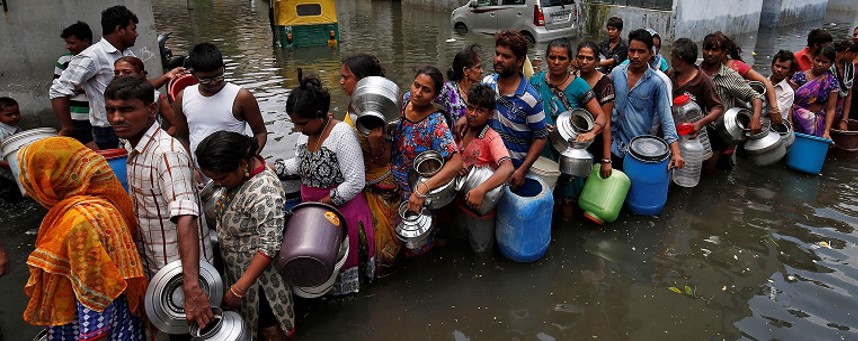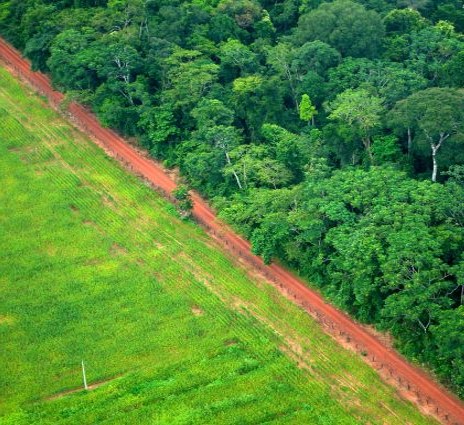THE BACKDROP
That rural distress has accentuated in the recent past is well established. Both the Centre & state governments have been grappling with the predicament. It is a matter of high priority to find lasting & sustainable solution to this vexed crisis assuming magnitude proportions.
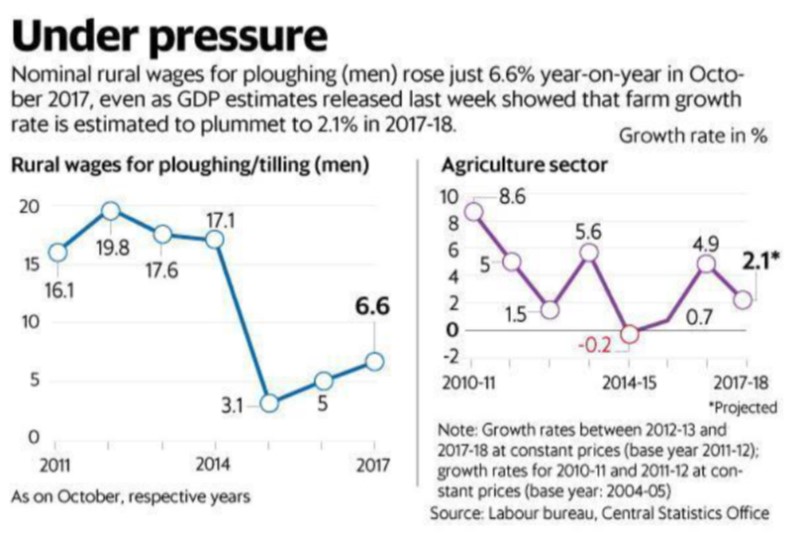
Rural indicators point to worsening farm distress. Sluggish wage growth, lower crop planting, fluctuating prices paint a dismal picture for farmers and the agriculture sector. New data released by the government on rural wages, crop prices and sowing of winter crops reveals that rural distress is worsening.
One sure shot way is to significantly (at least double) improve farm incomes & create meaningful employment year round. This calls for innovation driven scientific intervention that straddle all aspects of farming through marketing at the same being conscious of ecology & environment. It is in this context that SANGINI FOUNDATION along with its partner ecosystem has experimented and distilled a suite of farm technologies & crop management techniques that holds immense promise to not only address but also reverse the rural distress phenomena.
We will identify few states in the north as well as south India for interventions. This note outlines our solution scaffold, approach and intervention framework along with time frame and cost estimates.
THE APPROACH
SANGINI FOUNDATION's innovation driven framework to mitigate rural distress is a three pronged approach leveraging A) Solar Energy B) Protected Cultivation systems and C) Digital Agriculture - Smart & Precise to at least double farm incomes in a sustainable manner. It is also holistic straddling soil through seed to marketing besides being ecologically & environmentally safe & sound. Our unique approach is driven by a strong R&D focus with a core multi-disciplinary team comprising crop & social scientists.
A) Leveraging Solar Energy :
SANGINI FOUNDATION's R&D team has designed three farm-innovations that are solar driven:
1. Solar driven irrigation management: It is not only the quantity & quality of water but also the time of its supply that is critical for crop growth & yield. Solar powered irrigation (mostly drip) addresses his important aspect at least for the greater part of the day.

2. Solar driven pest management: Vertebrate pests can be effectively controlled by SANGINI FOUNDATION designed bio-acoustic & fencing solutions. Crop damage can be almost completely mitigated and yields & income therefore increased by at least 10-15% .
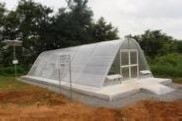
3. Solar driven food processing: SANGINI FOUNDATION's Agri-solar R&D team has deep &diverse expertise in the manufacturing state-of-art Solar Dryers (from small scale -10 kg to large scale - 5 tones) and customizing dryers as per the requirement of farmers/organizations for various fruits/vegetables/grains. The myriad benefits of Greenhouse solar dryers in post-harvest loss reduction (1.5 - 2.5 % storage loss mitigation), nutrient value enhancement has been well documented. Around 20% increase in market value of the produce is a given.
B) Leveraging Protected Cultivation Systems:
SANGINI FOUNDATION's R&D team has experimented with & finessed crop management techniques with stunning effect: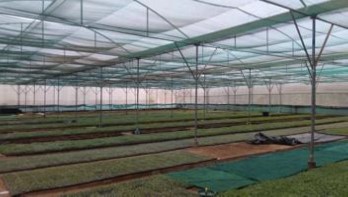
The advantages of protected cultivation systems are well established & validated. Both biotic & abiotic stresses can be considerably lessened in protected cultivation systems. Yield improvement is significant, reduction in the incidence of pests & disease substantial, input (water & nutrients) usage optimized and above all employment ensured all through the year.Essentially, SANGINI FOUNDATION's R&D team in collaboration with its lead science research partner - WVC (https://avrdc.org) has formulated a scientific suite of interventions to improve productivity in vegetables. Inter alia, this includes the use of polyroof & shade nethouses, grafted tomato seedlings, IPM methods, Crop rotation & intercropping and solar powered post-harvest techniques & technologies to reduce residues and pesticide use in Chili for instance.
Our protected cultivation system is designed exclusively for small & marginal farmers though it can be easily scaled up. Our experiments have proved that an initial investment of INR 1.4 lakhs for polyroof house and 1.1 lakhs for nethouse spread over an area of 160 sq.m is most profitable and investment recovered at the earliest.
For example, growing Capsicum under protected cultivation leads to 300% increase in harvestable yield 1400% jump in net incomes vis-a-vis open field cultivation. Similarly, improved agronomic practices in tomatoes protected cultivation resulted in 14% income betterment and 35% labor cost reduction.
C) Digital Agriculture - Smart & Precise Farming
Data driven intervention is bulwark of our approach framework. From improved (germplasm-cultivars) seeds to nursery management to crop production to pest management to post harvest activities, every aspect of farming will be documented and analysed on a continual basis. This will aid in real time / near real time course corrections across the value chain spectrum.
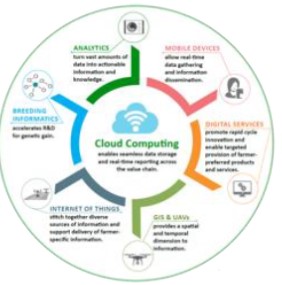
This critical objective entails the following activities:
- 1. Building predictive models (using Machine & Deep Learning techniques) based on primary (historical qualitative survey data) and secondary data.
- 2. On-going Data collection from demonstration plots, progressive farmers, training & knowledge management activities and outreach efforts
- 3. Imagery related data generated from Drone & Satellite technologies
- 4. Soil & Water quality data measurement & analysis
- 5. Data emanating from solar energy applications straddling irrigation management, VPM and processing
- 6. Building a "Data-Lake" to capture & store the data for analysis
- 7. Real time Descriptive, Prescriptive & Video analysis of streaming and static data on a daily basis
- 8. The output from such Big Data Analytics would pertain to:
B. Crop Types.
C. Crop Health.
D. Crop water content.
E. Nutrient requirement.
F. Yield Estimation
SANGINI FOUNDATION's critical data driven capacity building involves inter alia, maintaining a core team of data scientists & data engineers. Furthermore, a data analytics & reporting platform that generates AI based analysis on a real-time basis (to diagnose and predict / forecast points 1 thru 6) is a part of the solution mix.
Analytics driven AI smart - precision farming centric intervention program will be effective (10-15% production increase according to research studies) and a gamechanger for farmers. Besides the use & adoption of the state-of-the-art analytical techniques, such a data driven and analytics centric approach is a true point of differentiation (PoD) of our proposed intervention program.
DEMONSTRATION LED INTERVENTION FRAMEWORK:
When it comes adoption of new techniques and technologies in agriculture, the adage, "seeing is believing" no longer suffices. One needs to "experience" to change / believe. Therefore, demonstration of innovative solutions on model farms is an effective way to get farmers to understand and adopt new solutions.
SANGINI FOUNDATION's typical intervention approach framework:
- 1. Identify 3-5 districts with latent potential based on primary & secondary data
- 2. Further identify 5-6 tehsils & 3000 to 5000 progressive farmers in all ( 70-90 farmers per tehsil based on geo-strategic parameters)
- 3. Identify major commercial crops in the tehsils (top 3-5 cereals and vegetables) and explore 2-3 new crops that can be introduced
- 4. Setting up model demonstration units on farmers land. This includes
a. AWS (Automatic Weather Systems) devices b. Solar powered (Drip) Irrigation system c. Solar driven pest (vertebrate) management system d. Solar backed food processing solutions
a. Via mobile app b. Real time content in local language
a. Mobile App powered b. Real time
The key elements of our intervention strategy is to ensure quality inputs. It starts with superior germplasm (improved cultivars / lines / seeds) and ends with enhancing the nutritive value of the produce. Toward this goal, we will leverage out tie up's with agricultural research institutes.
In many ways, the proposed intervention framework is holistic straddling abiotic and biotic factors. It goes beyond the farm to establish market linkages thereby unlocking the value chain of the farm produce.
Sangini Foundation with its partner ecosystem consisting of AVRDC, Aveon Technologies, ICAR, KVK's State Agricultural & Horticultural Departments, MCRF, NHB, BKS, Fasal, Hummingbird, Soliculture etc. will implement the R&D driven, innovation led participatory program to reduce rural distress.

